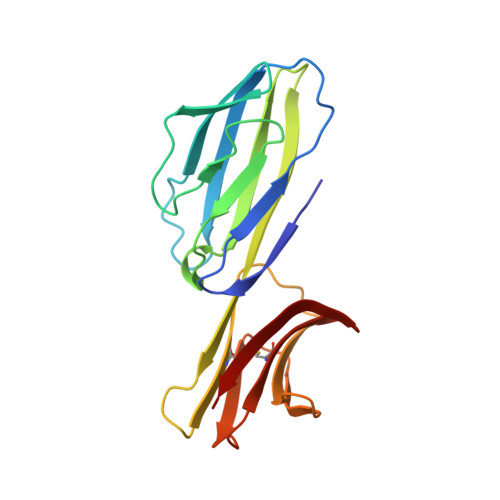Crystal structure of domains 3 and 4 of rat CD4: relation to the NH2-terminal domains.
Brady, R.L., Dodson, E.J., Dodson, G.G., Lange, G., Davis, S.J., Williams, A.F., Barclay, A.N.(1993) Science 260: 979-983
- PubMed: 8493535
- DOI: https://doi.org/10.1126/science.8493535
- Primary Citation of Related Structures:
1CID - PubMed Abstract:
The CD4 antigen is a membrane glycoprotein of T lymphocytes that interacts with major histocompatibility complex class II antigens and is also a receptor for the human immunodeficiency virus. the extracellular portion of CD4 is predicted to fold into four immunoglobulin-like domains. The crystal structure of the third and fourth domains of rat CD4 was solved at 2.8 angstrom resolution and shows that both domains have immunoglobulin folds. Domain 3, however, lacks the disulfide between the beta sheets; this results in an expansion of the domain. There is a difference of 30 degrees in the orientation between domains 3 and 4 when compared with domains 1 and 2. The two CD4 fragment structures provide a basis from which models of the overall receptor can be proposed. These models suggest an extended structure comprising two rigid portions joined by a short and possibly flexible linker region.
- Department of Chemistry, University of York, United Kingdom.
Organizational Affiliation:

















